207 results found for 'Energy'. Prev |1|2|3|4|5|6|7|8|9 | Next | View 100 per page
Low relevance matches: 10 other results may be of interest to you. Show low relevance matches
Electrical Circuits - Electrical energy can be transferred and transformed in electrical circuits and can be generated from a range of sources ACSSU155 Year 8 Physical Sciences
Energy Forms - Energy appears in different forms, including movement (kinetic energy), heat and potential energy, and energy transformations and transfers cause change within systems ACSSU176 Year 9 Biological Sciences
Ecology - Ecosystems consist of communities of interdependent organisms and abiotic components of the environment; matter and energy flow through these systems ACSSU179 Year 9 Chemical Sciences
Chemical Reactions - Chemical reactions, including combustion and the reactions of acids, are important in both non-living and living systems and involve energy transfer ACSSU182 Year 9 Physical Sciences
Energy Transfer - Energy transfer through different mediums can be explained using wave and particle models ACSSU190 Year 10 Physical Sciences
Energy Conservation - Energy conservation in a system can be explained by describing energy transfers and transformations ACSSU219 Year 6 Physical Sciences
Alternative Energies - Energy from a variety of sources can be used to generate electricity ACSCH018 Year 11 Chemical fundamentals
Properties and structure of atoms - Atoms can be modelled as a nucleus surrounded by electrons in distinct energy levels, held together by electrostatic forces of attraction between the nucleus and electrons; atoms can be represented using electron shell diagrams (all electron shells or val ACSCH019 Year 11 Chemical fundamentals
Properties and structure of atoms - Flame tests and atomic absorption spectroscopy are analytical techniques that can be used to identify elements; these methods rely on electron transfer between atomic energy levels ACSCH036 Year 11 Chemical fundamentals
Chemical reactions - All chemical reactions involve the creation of new substances and associated energy transformations, commonly observable as changes in the temperature of the surroundings and/or the emission of light ACSCH037 Year 11 Chemical fundamentals
Chemical reactions - Endothermic and exothermic reactions can be explained in terms of the Law of Conservation of Energy and the breaking and reforming of bonds; heat energy released or absorbed can be represented in thermochemical equations ACSCH073 Year 11 Molecular interactions and reactions
Rates of chemical reactions - Catalysts, including enzymes and metal nanoparticles, affect the rate of certain reactions by providing an alternative reaction pathway with a reduced activation energy, hence increasing the proportion of collisions that lead to a chemical change ACSPH020 Year 11 Thermal nuclear and electrical physics
Heating processes - Provided a substance does not change state, its temperature change is proportional to the amount of energy added to or removed from the substance; the constant of proportionality describes the heat capacity of the substance ACSPH022 Year 11 Thermal nuclear and electrical physics
Heating processes - Two systems in contact transfer energy between particles so that eventually the systems reach the same temperature; that is, they are in thermal equilibrium ACSPH030 Year 11 Thermal nuclear and electrical physics
Ionising radiation and nuclear reactions - Alpha, beta and gamma radiation have sufficient energy to ionise atoms ACSPH039 Year 11 Thermal nuclear and electrical physics
Electrical circuits - Energy is conserved in the energy transfers and transformations that occur in an electrical circuit ACSPH040 Year 11 Thermal nuclear and electrical physics
Electrical circuits - The energy available to charges moving in an electrical circuit is measured using electric potential difference, which is defined as the change in potential energy per unit charge between two defined points in the circuit ACSPH041 Year 11 Thermal nuclear and electrical physics
Electrical circuits - Energy is required to separate positive and negative charge carriers; charge separation produces an electrical potential difference that can be used to drive current in circuits ACSPH042 Year 11 Thermal nuclear and electrical physics
Electrical circuits - Power is the rate at which energy is transformed by a circuit component; power enables quantitative analysis of energy transformations in the circuit ACSPH065 Year 11 Linear Motion and Waves
Linear motion and force - Energy is conserved in isolated systems and is transferred from one object to another when a force is applied over a distance; this causes work to be done and changes to kinetic and/or potential energy of objects ACSPH066 Year 11 Linear Motion and Waves
Linear motion and force - Collisions may be elastic and inelastic; kinetic energy is conserved in elastic collisions ACSPH073 Year 11 Linear Motion and Waves
Waves - A mechanical system resonates when it is driven at one of its natural frequencies of oscillation; energy is transferred efficiently into systems under these conditions ACSPH111 Year 12 Gravity and electromagnetism
Electromagnetism - Conservation of energy, expressed as Lenz’s Law of electromagnetic induction, is used to determine the direction of induced current ACSPH136 Year 12 Revolutions in modern physics
Quantum theory - On the atomic level, electromagnetic radiation is emitted or absorbed in discrete packets called photons; the energy of a photon is proportional to its frequency; and the constant of proportionality, Planck’s constant, can be determined experimentally (fo ACSPH139 Year 12 Revolutions in modern physics
Quantum theory - The Bohr model of the hydrogen atom integrates light quanta and atomic energy states to explain the specific wavelengths in the hydrogen spectrum and in the spectra of other simple atoms; the Bohr model enables line spectra to be correlated with atomic en ACSBL052 Year 11 Biodiversity and the interconnectedness of life
Ecosystem dynamics - Photosynthesis is a biochemical process that in plant cells occurs in the chloroplast and that uses light energy to organic compounds; the overall process can be represented as a balanced chemical equation ACSBL053 Year 11 Biodiversity and the interconnectedness of life
Ecosystem dynamics - Cellular respiration is a biochemical process that occurs in different locations in the cytosol and mitochondria and metabolises organic compounds, aerobically or anaerobically, to release useable energy in the form of ATP; the overall process can be repr ACSPH021 Year 11 Thermal nuclear and electrical physics
Heating processes - Change of state involves internal energy changes to form or break bonds between atoms or molecules; latent heat is the energy required to be added to or removed from a system to change the state of the system ACSPH067 Year 11 Linear Motion and Waves
Waves - Waves are periodic oscillations that transfer energy from one point to another ACSPH070 Year 11 Linear Motion and Waves
Waves - Mechanical waves transfer energy through a medium; mechanical waves may oscillate the medium or oscillate the pressure within the medium ACSPH140 Year 12 Revolutions in modern physics
Quantum theory - On the atomic level, energy and matter exhibit the characteristics of both waves and particles ACSPH135 Year 12 Revolutions in modern physics
Quantum theory - Atomic phenomena and the interaction of light with matter indicate that states of matter and energy are quantised into discrete values ACSPH105 Year 12 Gravity and electromagnetism
Electromagnetism - When a charged body moves or is moved from one point to another in an electric field and its potential energy changes, work is done on or by the field


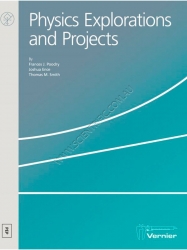

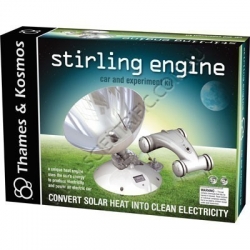
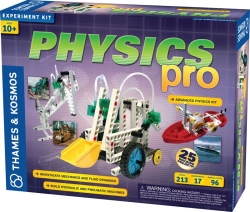

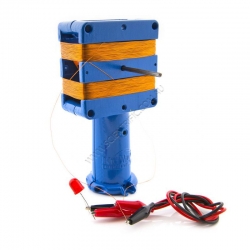
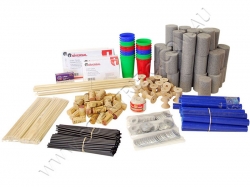

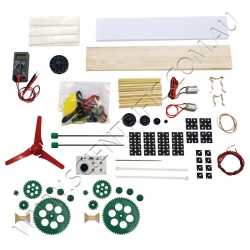
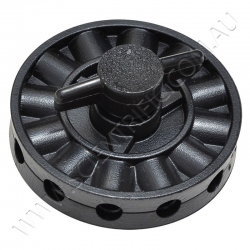
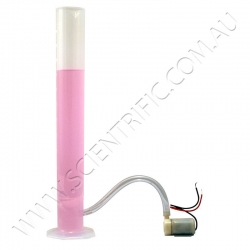
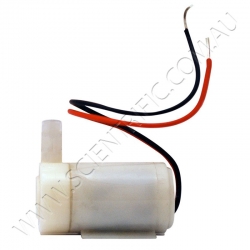
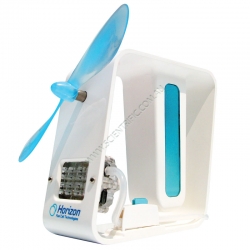
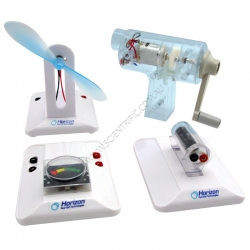
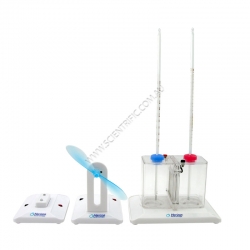
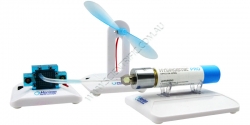
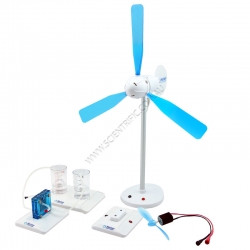
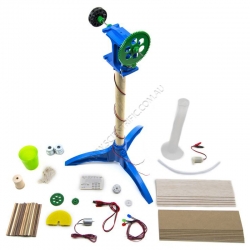
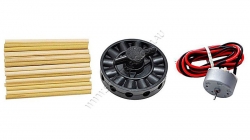
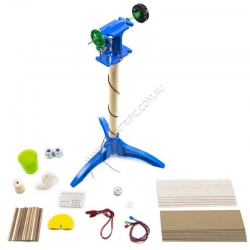
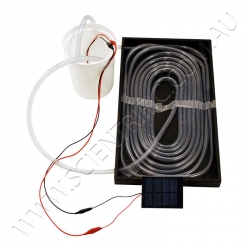
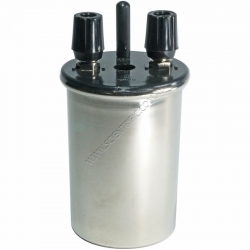

207 results found for 'Energy'. Prev |1|2|3|4|5|6|7|8|9 | Next | View 100 per page
Low relevance matches: 10 other results may be of interest to you. Show low relevance matches
Curriculum resources related to 'Energy'
ACSSU097 Year 6 Physical SciencesElectrical Circuits - Electrical energy can be transferred and transformed in electrical circuits and can be generated from a range of sources ACSSU155 Year 8 Physical Sciences
Energy Forms - Energy appears in different forms, including movement (kinetic energy), heat and potential energy, and energy transformations and transfers cause change within systems ACSSU176 Year 9 Biological Sciences
Ecology - Ecosystems consist of communities of interdependent organisms and abiotic components of the environment; matter and energy flow through these systems ACSSU179 Year 9 Chemical Sciences
Chemical Reactions - Chemical reactions, including combustion and the reactions of acids, are important in both non-living and living systems and involve energy transfer ACSSU182 Year 9 Physical Sciences
Energy Transfer - Energy transfer through different mediums can be explained using wave and particle models ACSSU190 Year 10 Physical Sciences
Energy Conservation - Energy conservation in a system can be explained by describing energy transfers and transformations ACSSU219 Year 6 Physical Sciences
Alternative Energies - Energy from a variety of sources can be used to generate electricity ACSCH018 Year 11 Chemical fundamentals
Properties and structure of atoms - Atoms can be modelled as a nucleus surrounded by electrons in distinct energy levels, held together by electrostatic forces of attraction between the nucleus and electrons; atoms can be represented using electron shell diagrams (all electron shells or val ACSCH019 Year 11 Chemical fundamentals
Properties and structure of atoms - Flame tests and atomic absorption spectroscopy are analytical techniques that can be used to identify elements; these methods rely on electron transfer between atomic energy levels ACSCH036 Year 11 Chemical fundamentals
Chemical reactions - All chemical reactions involve the creation of new substances and associated energy transformations, commonly observable as changes in the temperature of the surroundings and/or the emission of light ACSCH037 Year 11 Chemical fundamentals
Chemical reactions - Endothermic and exothermic reactions can be explained in terms of the Law of Conservation of Energy and the breaking and reforming of bonds; heat energy released or absorbed can be represented in thermochemical equations ACSCH073 Year 11 Molecular interactions and reactions
Rates of chemical reactions - Catalysts, including enzymes and metal nanoparticles, affect the rate of certain reactions by providing an alternative reaction pathway with a reduced activation energy, hence increasing the proportion of collisions that lead to a chemical change ACSPH020 Year 11 Thermal nuclear and electrical physics
Heating processes - Provided a substance does not change state, its temperature change is proportional to the amount of energy added to or removed from the substance; the constant of proportionality describes the heat capacity of the substance ACSPH022 Year 11 Thermal nuclear and electrical physics
Heating processes - Two systems in contact transfer energy between particles so that eventually the systems reach the same temperature; that is, they are in thermal equilibrium ACSPH030 Year 11 Thermal nuclear and electrical physics
Ionising radiation and nuclear reactions - Alpha, beta and gamma radiation have sufficient energy to ionise atoms ACSPH039 Year 11 Thermal nuclear and electrical physics
Electrical circuits - Energy is conserved in the energy transfers and transformations that occur in an electrical circuit ACSPH040 Year 11 Thermal nuclear and electrical physics
Electrical circuits - The energy available to charges moving in an electrical circuit is measured using electric potential difference, which is defined as the change in potential energy per unit charge between two defined points in the circuit ACSPH041 Year 11 Thermal nuclear and electrical physics
Electrical circuits - Energy is required to separate positive and negative charge carriers; charge separation produces an electrical potential difference that can be used to drive current in circuits ACSPH042 Year 11 Thermal nuclear and electrical physics
Electrical circuits - Power is the rate at which energy is transformed by a circuit component; power enables quantitative analysis of energy transformations in the circuit ACSPH065 Year 11 Linear Motion and Waves
Linear motion and force - Energy is conserved in isolated systems and is transferred from one object to another when a force is applied over a distance; this causes work to be done and changes to kinetic and/or potential energy of objects ACSPH066 Year 11 Linear Motion and Waves
Linear motion and force - Collisions may be elastic and inelastic; kinetic energy is conserved in elastic collisions ACSPH073 Year 11 Linear Motion and Waves
Waves - A mechanical system resonates when it is driven at one of its natural frequencies of oscillation; energy is transferred efficiently into systems under these conditions ACSPH111 Year 12 Gravity and electromagnetism
Electromagnetism - Conservation of energy, expressed as Lenz’s Law of electromagnetic induction, is used to determine the direction of induced current ACSPH136 Year 12 Revolutions in modern physics
Quantum theory - On the atomic level, electromagnetic radiation is emitted or absorbed in discrete packets called photons; the energy of a photon is proportional to its frequency; and the constant of proportionality, Planck’s constant, can be determined experimentally (fo ACSPH139 Year 12 Revolutions in modern physics
Quantum theory - The Bohr model of the hydrogen atom integrates light quanta and atomic energy states to explain the specific wavelengths in the hydrogen spectrum and in the spectra of other simple atoms; the Bohr model enables line spectra to be correlated with atomic en ACSBL052 Year 11 Biodiversity and the interconnectedness of life
Ecosystem dynamics - Photosynthesis is a biochemical process that in plant cells occurs in the chloroplast and that uses light energy to organic compounds; the overall process can be represented as a balanced chemical equation ACSBL053 Year 11 Biodiversity and the interconnectedness of life
Ecosystem dynamics - Cellular respiration is a biochemical process that occurs in different locations in the cytosol and mitochondria and metabolises organic compounds, aerobically or anaerobically, to release useable energy in the form of ATP; the overall process can be repr ACSPH021 Year 11 Thermal nuclear and electrical physics
Heating processes - Change of state involves internal energy changes to form or break bonds between atoms or molecules; latent heat is the energy required to be added to or removed from a system to change the state of the system ACSPH067 Year 11 Linear Motion and Waves
Waves - Waves are periodic oscillations that transfer energy from one point to another ACSPH070 Year 11 Linear Motion and Waves
Waves - Mechanical waves transfer energy through a medium; mechanical waves may oscillate the medium or oscillate the pressure within the medium ACSPH140 Year 12 Revolutions in modern physics
Quantum theory - On the atomic level, energy and matter exhibit the characteristics of both waves and particles ACSPH135 Year 12 Revolutions in modern physics
Quantum theory - Atomic phenomena and the interaction of light with matter indicate that states of matter and energy are quantised into discrete values ACSPH105 Year 12 Gravity and electromagnetism
Electromagnetism - When a charged body moves or is moved from one point to another in an electric field and its potential energy changes, work is done on or by the field
Products related to 'Energy'

Vernier Investigating Chemistry through Inquiry
VERNIER INVESTIGATING CHEMISTRY THROUGH INQUIRY
Investigating Chemistry through Inquiry lab book contains 25 inquiry-based chemistry investigations.
Each experiment includes a preliminary activity, teacher information, sample researchable questions and sample data for ...
Order code: CHEM-I

Vernier Investigating Chemistry through Inquiry - Electronic Version
VERNIER INVESTIGATING CHEMISTRY THROUGH INQUIRY - ELECTRONIC
Investigating Chemistry through Inquiry lab book contains 25 inquiry-based chemistry investigations.
Each experiment includes a preliminary activity, teacher information, sample researchable questions and sam...
Order code: CHEM-I-E

Vernier Physics Explorations and Projects
VERNIER PHYSICS EXPLORATIONS AND PROJECTS
Vernier Physics Explorations and Projects is a collection of laboratory investigations aligned to the USA Next Generation Science Standards (NGSS). Most included investigations set up a situation for students to explore and analyz...
Order code: PEP

Vernier Physics Explorations and Projects - Electronic Version
VERNIER PHYSICS EXPLORATIONS AND PROJECTS - ELECTRONIC
Vernier Physics Explorations and Projects is a collection of laboratory investigations aligned to the USA Next Generation Science Standards (NGSS). Most included investigations set up a situation for students to explo...
Order code: PEP-E

Stirling Engine Model
Power a Car with Solar Generated Electricity. Discover the Stirling engine, a simple, clean and efficient energy technology that is quickly becoming a viable source of electricity as the availability of fossil fuels declines. The Stirling engine in this kit uses renewable energy ...
Order code: 620325



Physics Pro
ADVANCED PHYSICS KIT.
The Physics Pro advanced physics kit is the biggest, most advanced physics kit from Thames and Kosmos. Other kits in the Thames & Kosmos Physics Series teach various aspects of physics through the process of building models and conducting expe...
Order code: 625313



KidWind GENPack Generator Kit
KIDWIND GENPACK
The GENPack allows students to construct their own electrical generator and perform experiments with electricity and magnetism. Changing variables in the generator design will impact current and voltage output. The GENPack is perfect for physics and electr...
Order code: KWA0016




KidWind Simple Hand Generator Kit
KIDWIND SIMPLE HAND GENERATOR
The KidWind Simple Hand Generator (simpleGEN) is an easy-to-build AC generator that allows students to explore the basics of electrical generator design.
With the simpleGEN you can demonstrate Faraday’s law, light LEDs and perform experime...
Order code: KWA0051




KidWind WindWise Windmills Module #3 (2nd edition)
This module has almost sold out...
KIDWIND WINDWISE WINDMILLS MODULE #3 (2ND EDITION)
Windmills are the ancestors of modern wind turbines. To understand how wind turbines work one must first understand a windmill. The materials in this kit will help students build a windmill and explore how these devices c...
Order code: KWA0057




KidWind WindWise Complete Curriculum Binder (2nd edition)
Discontinued. Just 2 sets left.
Wind energy is becoming an important part of the global energy mix. WindWise Education is KidWind's comprehensive wind energy curriculum for students in grades 6 to 12, designed to prepare them for a wind-powered future. This robust curriculum helps students understand how wind e...
Order code: KWF0093




KidWind Science Wind Project
KIDWIND SCIENCE WIND PROJECT
Make a unique science project from hard-to-find parts such as generators, hubs, gears, pulleys and power measurement devices. You’ll need to provide the tower materials, ideas, creativity and muscle to build a device that harnesses the power o...
Order code: KWA0024




KidWind Wind Turbine Hub
Discontinued, only available in packs of 3 or 10: order codes KW-WTH3 or KW-WTH10.
KIDWIND WIND TURBINE HUB This KidWind 12-hole crimping hub made from recycled plastic allows you to turn any DC generator into a wind turbine. The hub will press fit onto the shaft of many small DC generators; just attach your own blades and begin experimenting w... Order code: KWH0005-1
KIDWIND WIND TURBINE HUB This KidWind 12-hole crimping hub made from recycled plastic allows you to turn any DC generator into a wind turbine. The hub will press fit onto the shaft of many small DC generators; just attach your own blades and begin experimenting w... Order code: KWH0005-1


KidWind Mini Water Pump with Cylinder
The KidWind Low Voltage Water Pump with tubing and cylinder is a great way to demonstrate and make visible power output from KidWind wind and solar kits. It makes comparing different turbine designs easy; simply measure how high different turbines can pump water using this mini p...
Order code: KWH0014-C



KidWind Mini Water Pump with Tubing
Last two future stock will be sold as KW-PUMP
KIDWIND MINI WATER PUMP WITH TUBING
The KidWind low voltage water pump with tubing is a great way to demonstrate and make visible power output from KidWind wind and solar kits. It makes comparing different turbine designs easy; simply measure how high different turbines c...
Order code: KWH0016



Horizon Bio-Energy Discovery Kit
HORIZON BIO-ENERGY DISCOVERY KIT
Demonstrates the latest in fuel cell technology using ethanol as a fuel. The fuel cell kit directly converts chemical energy in ethanol (alcohol) to electrical energy without combustion. The device can run non-stop for hours, providing an ...
Order code: FCJJ-22



Horizon Super Capacitor Science Kit
HORIZON SUPER CAPACITOR SCIENCE KIT:
Introduce students to the extraordinary storage and power potential of the super capacitor. Create energy from the hand crank and monitor energy storage with a charge level indicator. Then demonstrate the energy density and power of th...
Order code: FCJJ-35



Horizon Thermal Power Science Kit
HORIZON THERMAL POWER SCIENCE KIT
Now you can generate electricity using nothing more than a combination of hot and cold water and a special conversion cell. As the temperature evens out between the two containers of water, the power level reduces. LED and mini turbines d...
Order code: FCJJ-38



Horizon Micro Fuel Cell Science Kit
HORIZON MICRO FUEL CELL SCIENCE KIT
Explore the future of energy storage with Horizon’s Micro-Fuel Cell Science Kit. Power a mini turbine by converting solid state hydrogen in the HYDROSTIK PRO metal hydride cartridge into electrical energy via a Horizon PEM fuel cell. Yo...
Order code: FCJJ-44

Horizon Wind to Hydrogen Science Kit
HORIZON WIND TO HYDROGEN SCIENCE KIT
Enable your students to invent their own clean energy applications using a small electric motor powered by a fuel cell. Hydrogen is produced through water electrolysis by a reversible PEM fuel cell that is itself powered by a wind turb...
Order code: FCJJ-56



KidWind Advanced Wind Experiment Kit (A0012)
KIDWIND ADVANCED WIND EXPERIMENT KIT
Perform all of the same investigations as the KW-BWX Basic Wind Experiment Kit with the ability to generate more power at higher voltages (0.5–20V). Discover advanced concepts of wind turbine technology including gearboxes and generato...
Order code: KW-AWX

KidWind Basic Turbine Building Parts
KIDWIND BASIC TURBINE BUILDING PARTS
Supplied in a sealable bag, the KidWind Hub, a motor/generator and 25 dowels are the bare-bones components to build your own experimental wind turbine. This package is great for students who don't want a ready-made wind turbine tower a...
Order code: KW-BTPART




KidWind Basic Wind Experiment Kit
KIDWIND BASIC WIND EXPERIMENT KIT
Explore wind energy affordably and easily. This kit, one of our most popular, allows young scientists to test a variety of blade designs, generate electricity (0.5 –3 V range) and lift weights. The Basic Wind Experiment Kit has all the ma...
Order code: KW-BWX

KidWind Solar Thermal Exploration Kit
KIDWIND SOLAR THERMAL EXPLORATION KIT
The Solar Thermal Exploration Kit is modeled on a domestic solar water heating system. Explore variables such as box colour, light intensity, tube design, rate of water pumping and amount of time it takes to heat the water. Learn abou...
Order code: KW-STXK



IEC Joule's Calorimeter Assembly with Cup Lid & Insert 2 ohm
IEC JOULE'S CALORIMETER ASSEMBLY
The IEC Joule's Calorimeter is a standard 50mmD x 75mmH copper calorimeter cup with the 'Joule's Insert' fitted.
The Joule's Insert consists of a calorimeter lid with stirrer and two 4mm banana socket supporting two conducting rods that...
Order code: HL0840-001



KidWind Advanced Wind Experiment Kit Class Pack
KIDWIND ADVANCED WIND EXPERIMENT CLASSROOM KIT
Perform all of the same investigations as the KW-BWX Basic Wind Experiment Kit with the ability to generate more power at higher voltages (0.5–20V). Discover advanced concepts of wind turbine technology including gearboxes an...
Order code: KW-AWXC
207 results found for 'Energy'. Prev |1|2|3|4|5|6|7|8|9 | Next | View 100 per page


